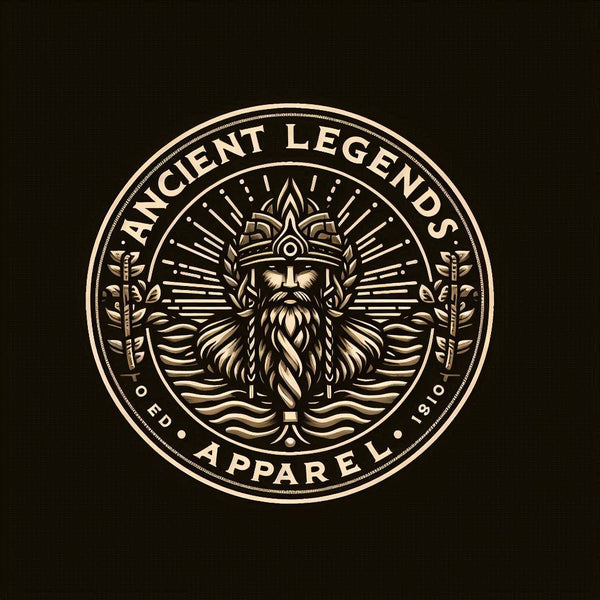Myths and Misconceptions About Viking Warriors
Karl FShare
INTRODUCTION
Plunging into medieval history, one can't escape the vivid sparks cast by the Viking warriors. Swirling between folklore, legends, and historical records, these robust figures are painted with a blend of fantastical and ferocious strokes. Our contemporary image of the marauding Viking warrior ornate with horned helmet echoes across films, books, and popular culture. However, scratch below the surface of these narratives and you’ll find truths obscured by time, misinformation, and myth-making.
ORIGIN AND CULTURAL CONTEXT
Viking warriors hailed from the Norse world, spanning modern-day Denmark, Norway, and Sweden. The term 'Viking' itself, derived from the Old Norse term 'vikingr,' designated a sea-faring warrior or explorer. Between the 8th and 11th centuries, known as the Viking Age, these fierce soldiers embarked on a relentless spree of exploration, trade, and conquest. Esteemed for their naval prowess and known for their brutal, often violent tactics, they sailed across the frigid North Atlantic, reaching lands as distant as North America, North Africa, and Central Asia.
The Norse culture was imbued with mysticism and mythology, deeply intertwined with their martial prowess. Viking warriors were said to be chosen by Odin, the All-Father of gods, the god of war, and passed wisdom. Each battle was not merely a clash of human strength but intertwined with a divine scheme, each victory, a blessing from the gods.
THE LEGEND OR STORY
Over time, a web of myths and legends were spun around the Viking warriors, some rooted in truth, others in the realm of fancy. Central to Viking mythology was their belief in Valhalla, the majestic hall of Odin where warriors slain in battle were welcomed. This belief fueled the Viking’s warrior ethos, driving them to face death with courage, in the hope of joining this immortal assembly.
The legacy of Viking warriors also birthed the legend of the ‘berserkers,’ warriors believed to fight with uncontrollable rage, impervious to pain or injury. Historians and mythologists have proposed various explanations – from ritualistic consumption of hallucinogenic substances to spiritual possession – yet the truth remains clouded in ancient mystery.
INTERPRETATIONS AND SYMBOLISM
In Norse mythology, Viking warriors were symbols of strength, courage, and divine favor. Certain symbols personified these attributes, such as the Vegvisir (an ancient stave believed to guide people through rough weather) and Mjolnir (Thor's hammer, known for its destructive power). The Viking longship, with its dragon-headed prow, represented their adventuring spirit, maritime skill, and domination.
The image of the ‘berserker,’ often associated with the bear or the wolf, was symbolic of primal forces, unshackled ferocity, and the chaos of battle. Odin himself was believed to unchain these beasts of war before important conflicts.
COMPARISONS IN OTHER CULTURES
The archetype of the Viking warrior, a figure of martial prowess, heroic ethos, and mythical subtleties, echoes in other cultures. They align with the Samurai of Japan, who carried their warrior code of Bushido with spiritual commitment, viewing battle as a path to enlightenment. In Hindu mythology, the fabled Kshatriyas (warrior class) share the belief of achieving higher spiritual realms through valiant death in war.
Marvelously, it's in these alignments, these cultural echoes, where we note the universalities of human myth-making – the fusion of the mortal and the divine, the principle of honor and the longing for an immortal legacy.
MODERN REFERENCES AND POP CULTURE
In the kaleidoscope of modern pop culture, the Viking warrior has been refracted into countless images. From Wagner's ‘Der Ring des Nibelungen’ where helmet-clad figures sing of gods and warriors to the gritty spectacles of television series like ‘Vikings’ and ‘The Last Kingdom,’ their influence is discernible.
Today, they manifest not just in media, but also in sports representations like the Minnesota Vikings and in video games like ‘Assassin's Creed: Valhalla.’ These portrayals usually ripple with stereotypes – the horned helmets (a myth), relentless rage, and a thirst for battle and plunder.
LEGACY AND LASTING MYSTERIES
While our understanding of the Viking warriors is evolving, gaps exist between historical contours and mythological narratives. Did these fearsome warriors truly believe in their ascent to Valhalla? What were the mysterious rituals of the berserkers?
Scholars tirelessly decipher cryptic Old Norse texts, investigating archeological sites and ancient burial mounds for an intimate glimpse into the Viking era. Yet, much like the cryptic Viking runes, the complete, authentic understanding of the Norse warriors' psyche and life eludes us. These enduring mysteries add a shroud of enigmatic allure to their legacy – keeping the Viking warriors forever sailing in the foggy realms of history, myth, and fantasy.
While our perceptions are shaped by popular culture and handed-down legends, the true Viking warrior remains a fascinating, yet elusive figure – a complex tapestry of history, mythology, and enduring human questions about bravery, divine pathways, and the pursuit of immortality. Despite distortions and oversimplifications, their legacy perpetuates – under the frosty Northern Lights, in the archeologist's careful brush, in the historian’s dedicated pen, and the imagination of dreamers gazing out on long-lost horizons.
